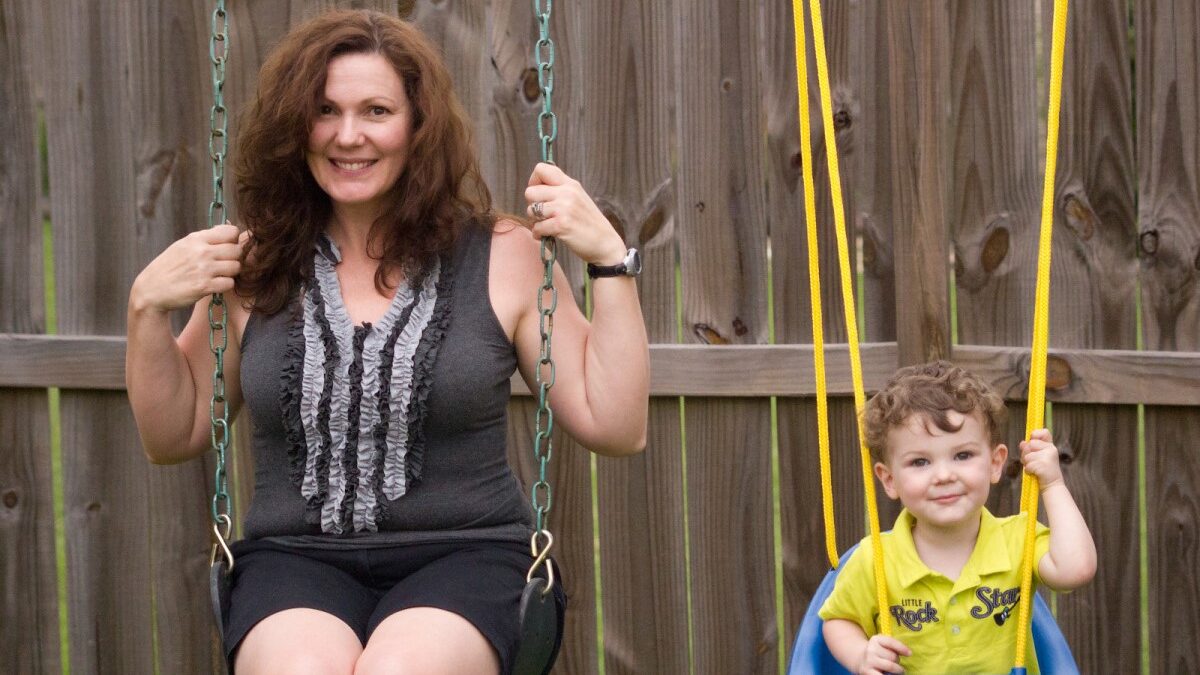
David Frum, in a 2014 Atlantic article, set out an explanation for why the abortion rate was going down. He observed that until around 1970 the order of socially acceptable resolutions for out-of-wedlock pregnancies was shotgun wedding (sic), adoption, abortion, and single motherhood. After the policy excitement of the 1970s settled out, Americans found themselves with a new order of preferences for pregnancies resulting from willing fornication: single parenthood, abortion, shotgun wedding, and adoption.
It doesn’t take much metaphysics to unravel this one. Most pregnant ladies don’t want to give up their babies. Most people (pregnant ladies included) don’t want babies killed. And a whole lot of unmarried couples who didn’t want to get pregnant don’t want to get married. Put it all together, and we’ve got single motherhood shocking the heck out of human history with a surge from last place to first.
But it’s worth considering what the now-unfavored shotgun wedding and adoption have to offer, because the answer is both simple and concrete. Each of them involves a willing legal bond. (This was easier to see before the term “illegitimate” started working out on the euphemism treadmill.) A child conceived out of wedlock existed outside of any legally binding arrangement for the shared and stable protection a married couple has to offer a child.
Fine Word, ‘Legitimate’!
Two parties contracted through wedlock have formally claimed a mutual legal obligation toward any child they may have together. Two people who marry each other, at the very least, have to go to a lot of trouble and expense to get out of their binding legal agreement. Through a shotgun wedding, the natural father and mother consent to legally contract with each other in the interest of their child.
Under adoption, the natural parents legally terminate their rights and obligations to their child, and the adoptive parents legally bind themselves to those rights and obligations. The birth mother, in an act of unfathomable humility, legally relinquishes the rights born of her natural connection to her baby (fathers must relinquish their rights as well, but biology puts the bulk of adoption’s weight with the mother).
The adoptive parents rebuild the child’s connection to comprehensively shared parental care by means of a legal contract. Through adoption, the natural parents and the adoptive parents willingly take legal action to protect the interests of the child. It is only fair to note here that the many contemporary cheapenings of marriage mean children are less likely to be adopted by a married man and woman. However, it has also become normal for a birth mother to have a big say in who adopts her child.
Shotgun weddings and adoption are each consensual, formal agreements ensuring the child’s care. They effect a legally binding promise so that one parent is not raising the child alone.
Single parenting is different. “Society,” whatever that is, has now decided to support single mothers, as Frum demonstrates. To find out how supportive society is, however, talk to a single mother.
Society Is Another Word for Nobody
Society is proud to nod righteously every May and June over greeting cards proclaiming that a really outstanding person can be both mother and father. Society is less interested in doing the math on the cleats to be purchased, health insurance procured, lessons taught, balls tossed, double Windsors tied, beauty declared, care provided when a parent is sick, and bad moods or overreactions smoothed by the stabilizing presence of another. Someone is needed, but no one is bound to be that person.
Under single motherhood, the daily work of parenting is informally shared by the mother and society in general. The more generally the work is societally outsourced, the less well it is performed. If the village is raising the child, whose job is it to play catch with him on Sunday afternoon? Aren’t most villagers called upon to pay some attention to their own families on their precious Sunday afternoons? The villagers donate a box of diapers to the local crisis pregnancy center for the good of a human being who wears diapers for two years of his life.
The outcome of this arrangement is no secret, as we all personally know more and more children whose fathers are as accessible to them as ancient Persian kings. The first paragraph of a Child Trends Data Banks report sums up the world of risks that is home to the 40 percent of U.S. children born outside of marriage: more poverty, more emotional and social problems, lower educational attainment, and a greater likelihood they’ll make the same choices their parents did.
Let’s not forget to read the next paragraph, about the moms of those kids: “Women who give birth outside of marriage tend to be more disadvantaged than their married counterparts, both before and after the birth. Unmarried mothers generally have lower incomes, lower education levels, and are more likely to be dependent on welfare assistance compared with married mothers. Women who have a nonmarital birth also tend to fare worse than childless single women; for example, they have reduced marriage prospects compared with single women without children.”
Maybe this is why Cosmo isn’t impressed with pro-life crisis pregnancy centers steering unmarried women toward single-momming.
Everybody, Somebody, Anybody, Nobody
Why doesn’t “society” do a better job? Because it doesn’t have to. Society didn’t sign a blessed thing saying it would. All society had to say was its prescribed lines: “You go, girl! We are here for you!” But who is “we”, and where is “here”? Since society is everybody everywhere, it’s also nobody nowhere.
Certainly, a significant amount of the money taxpayers earn is legislatively redirected to families deliberately existing without benefit of marriage. Seventy-five percent of women who give birth outside of marriage will come to rely on other people’s resources within five years of giving birth. Redistribution of personal holdings is the sine qua non of prioritizing single parenting over marriage-based options.
But again, ask a single mom if welfare (whether or not she receives it) is all a single mom needs. Society has two other ideas for dealing with her answer. First are child support laws that do a bad job of makeshifting a compulsory, retroactive, poorly fulfilled contract about money between two people who likely have some mutual antipathy.
Second is the unavailing hope that Grandma and Grandpa come through, because the rest of us have kids now, too. We hardly have time to give our own children the undivided attention they’ve got dibs on. Solutions of good intentioned baby-lovers skew far too disproportionately toward a child’s earliest years rather than the entire life to follow. Lacking either a natural or a legal bond to a fatherless child, “society” leaves both the child and his mother with nothing but hearts on social media posts about the assiduity of single moms.
The Other Second-Bests Are Not That Great Either
The downsides of the other three solutions to unwed pregnancy are clear. No-fault divorce and the general loss of respect for marriage have left the shotgun wedding so insecure as to be nearly useless (although even a broken marriage leaves more reliable provisions for children in its legal wake than no marriage at all). The unwillingness of many women to abort their babies is cut from the same cloth as their aversion to entrusting the baby to different parents. A mother’s horror of breaking her connection to her child grows from a fundamental rightness. Those who would be single moms derive their willingness from some good places.
But women are estimating their ability to raise a child alone from a bunch of empty promises. The college roommate who swears she’ll do whatever she can is a dear person who doesn’t know much about life yet. The grandparents who don’t have a lot of choice also have their own lives they’re usually not free to abandon.
The employer for whom a single mom works can’t give her more sick days than it gives its other employees, even though she needs twice as many. The church that collects baby bottles full of change every January can’t afford three years and nine summers of daycare for every child who doesn’t have a dad, and that’s only one of the most immediate needs of a dad-less human being. The neighbors who care can’t compromise on their duties to their own children to correct another person’s defaulting on his child.
“Society” has proven that it cannot stand in for the second party that has traditionally obliged itself to take over legally for an unbound father, whether that second party is the father himself, another man who marries the mother, or an adoptive couple. Society is too mammoth and impersonal to accurately pay out the sum of infinitesimal human moments that comprise parental duty. It couldn’t sign a contract if it wanted to, because the details that are the essential force of any legal agreement could never be worked out, and parenting is nothing but a colossal pile of exquisite details.
It’s her baby. It’s her choice. But we’re jerks for not telling her the truth. Single moms are . . . single. There’s a non-existent legal contract between single moms and “society” to prove it.









